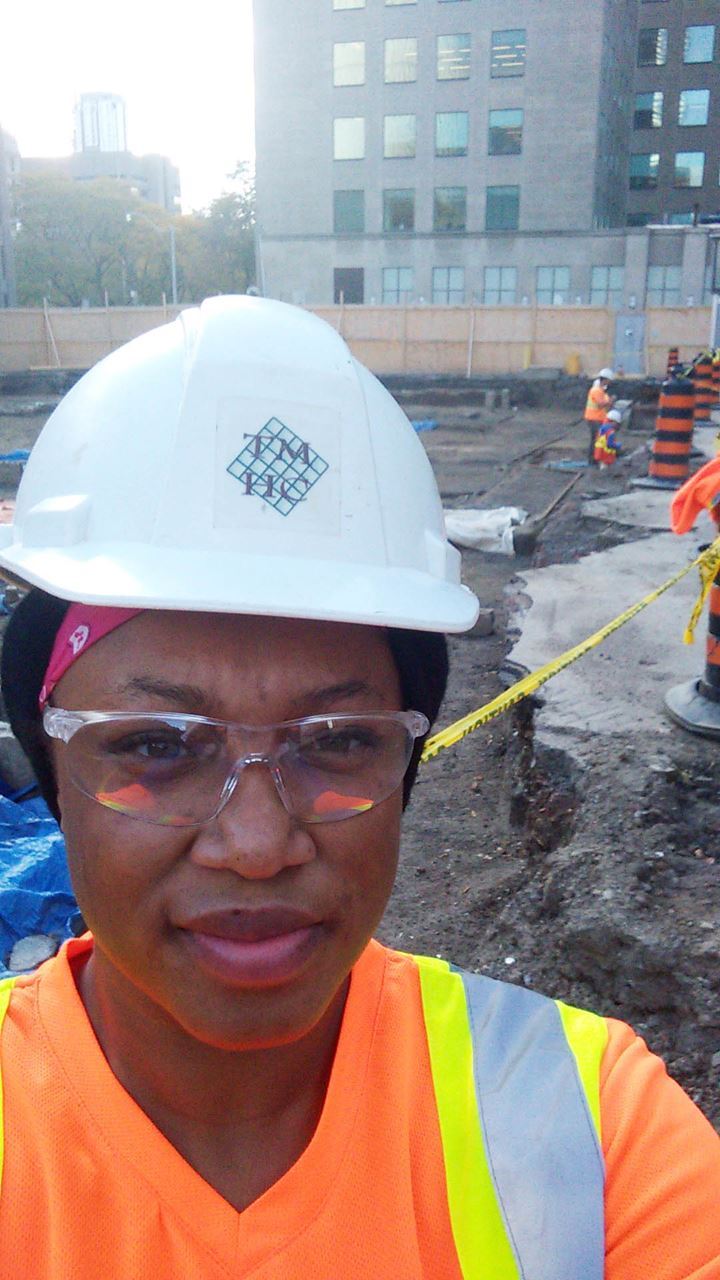After a bit of a hiatus, we have the second installment of our Connections and Pathways blog series! Our guest this time is Lisa Small, a graduate student at York University!
1- First, thank you so much for participating in this! Please tell us your name, who you are, and how you’re involved in Ontario archaeology.
My name is Lisa Small and I am currently a graduate student at York University pursuing the archaeology of the Canadian Underground Railroad.
2- Describe your own pathway to becoming involved in Ontario archaeology. How or why do you feel connected with Ontario’s past?
My pathway to becoming involved in Ontario archaeology stems from my general interest and connections to African Diasporic histories. While attending the University of Toronto I took a number of courses with professors at both the Mississauga and St. George Campus’ and was involved in the University’s field school. It was also my encounters with Karolyn Smardz-Frost, Dena Doroszenko of Ontario Heritage Trust and my working opportunity at Timmins Martelle that connected me directly to an underrepresented area of Canada’s/Ontario’s past that is of African Canadian Archaeology.
Why I feel connected to Ontario past? Next to Atlantic Canada, Ontario more specifically in the southwestern regions, places such as Chatham, Buxton, Dresden, Toronto, Oakville, Amherstburg, Hamilton and many others became the nuclei for the establishment of black settlements. This year’s themed event at the OAS symposium will be such an amazing opportunity for enthusiasts, researchers, archaeologists and the wider public to connect and contribute to a growing body of knowledge and heritage outside of dominate historical narratives.
 3- The theme of this year’s OAS symposium is “Connections and Pathways through the Past”. The organizers have highlighted a number of interesting connections that warrant exploration— “between the past and present, regional centers, archaeologists and the public, archaeology and history, Canada and the United States”. Are any of these connections especially important to you? How?
3- The theme of this year’s OAS symposium is “Connections and Pathways through the Past”. The organizers have highlighted a number of interesting connections that warrant exploration— “between the past and present, regional centers, archaeologists and the public, archaeology and history, Canada and the United States”. Are any of these connections especially important to you? How?
All of these above connections are particularly important to me because they show how archaeological work is not just a singular dialectic between the past and present, archaeologists and the public, or Canada and U.S etc..., but rather archaeological work is very much entangled in multiple connectivity’s, intersectionalities, histories and contemporaries. Such themes teach us how important our work is in making archaeology relevant, engaging and accessible to diverse disciplines, publics and peoples.
4- We’ve invited a lot of reflection on the past, but it’s hard not to consider the future of Ontario archaeology as well. Is there any one question about Ontario’s past you’d love to have answered in the future? Or any one theme you think needs more exploration?
I would like to see explorations of how archaeology speak to themes of belonging, place-making and even pressings topics such as race, social justice, human rights and the politics of representation within the province. An anthropological look to understanding the changing relationships between people, spaces and objects can give valuable insights into what it means to be human in Ontario, furthermore Canada.
5- We’re ending every interview with a question provided by the last person we featured. Our last interviewee, Jon Micon, asked: “Who in Ontario archaeology has been a role model in your life and made a major contribution to the field and/or your own work?”
There are a number of people that have shaped my interests in becoming more involved in archaeology. Within the province of Ontario, individuals such as Karolyn Smardz-Frost has been a key figure in Ontario archaeology where she has taken African Canadian history a step further to contextualize the stories and memories of early Black settler life with the stories and memories behind the material remains and landscapes. Her use of public engagement and collaboration at the Lucy and Thornton Blackburn archaeological site in the early 1990’s was an approach that extended well beyond conventional ways of “doing” archaeology in the province at the time. It’s a method today that’s informing how new generations of archaeologists such as myself are mixing public archaeology with contemporary issues, social justice, human and cultural rights for marginalized and historical underrepresented communities.
6- Finally: What question do you want us to ask our next interviewee? It doesn’t have to be related to the theme of connections and pathways, but should be related to Ontario archaeology in some way.
The archaeology of Ontario is an archaeology that considers diverse histories and retellings of the province’s multicultural past. That being said, how can archaeology in Ontario be used to promote and acknowledge these alternative understandings of the past that extend beyond normative narratives of Ontario’s history?
Thanks for taking the time to share with us, Lisa!
If you’d like to be featured in a future post, please contact Megan Anne Conger at megan.conger25@uga.edu. We'd love to hear from you.